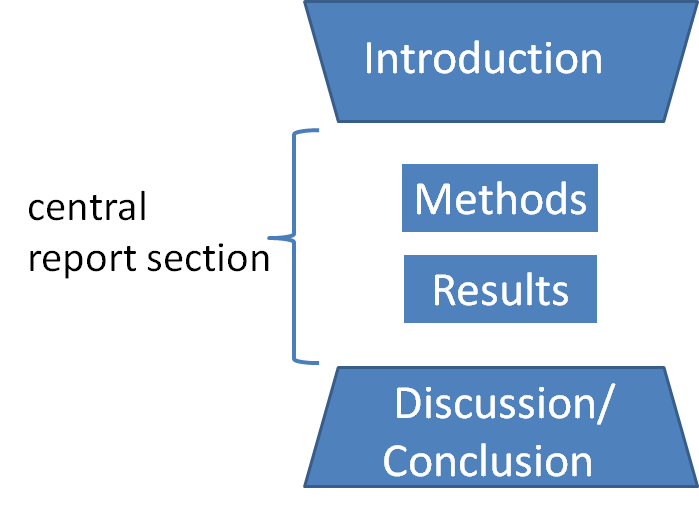The purpose of scientific writing is to transmit information, therefore it is important that your writing is clear, concise, and convincing. A clear, well-written paper is more likely to be accepted. The following are some tips to improve your writing's clarity:
Source: Dixon, J., Alder, L., & Fraser, J. (2016). How To Publish in Biomedicine: 500 Tips for Success (3rd ed.). CRC Press.
How carefully your title and abstract is written can significantly impact your work's discoverability in modern search engines and databases. To improve the odds of your work being easily discovered by your intended audience consider the following tips from BMJ Author Hub:
Source: Writing for online visibility. (2023). BMJ Author Hub. Retrieved March 28, 2023,

Image source: Wikimedia Commons
Many scientific papers use the IMRaD structure. IMRaD is an acronym for Introduction, Materials/Methods, Results and Discussion. The Introduction section is a brief one explaining the WHY of your paper. It includes discussing what is the problem, what is not known, and what is the objective of the paper. The next section, Materials/Methods, is a brief one explaining HOW the study was completed and describing the methodology used. The Results of the study are shared. The Discussion section is a large section that contains answers to these questions: WHAT did you find? What does it mean? What is next? What are the possible implications for the future of this study? A conclusion is reached.
Source: Nair, P. K. R., & Nair, V. D. (2014). Organization of a Research Paper: The IMRAD Format. In P. K. R. Nair & V. D. Nair (Eds.), Scientific Writing and Communication in Agriculture and Natural Resources (pp. 13–25). Springer International Publishing.